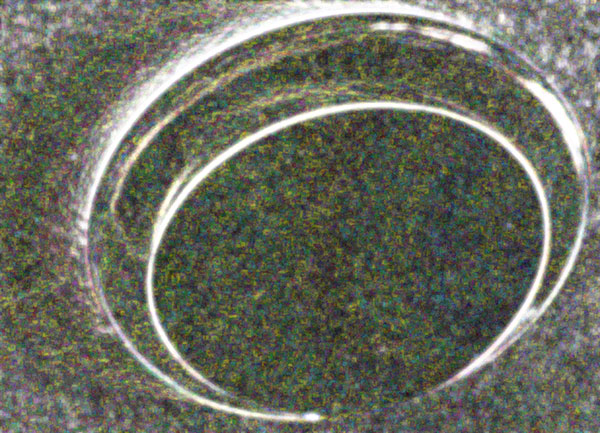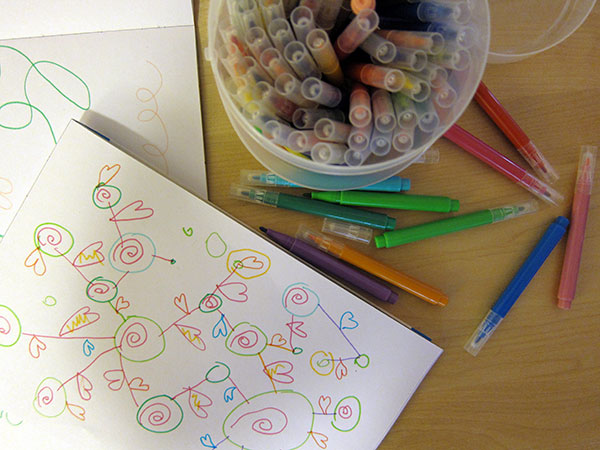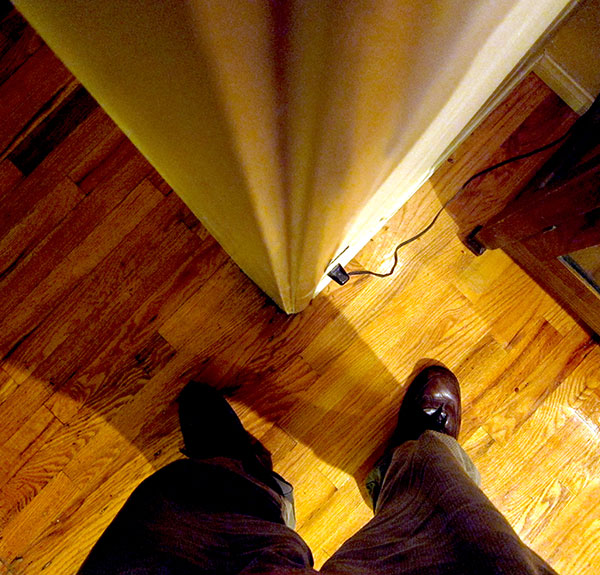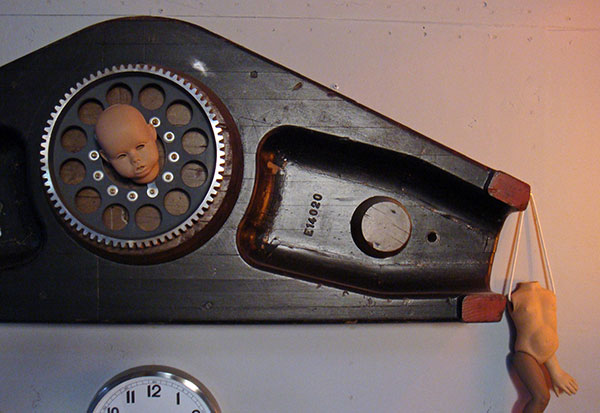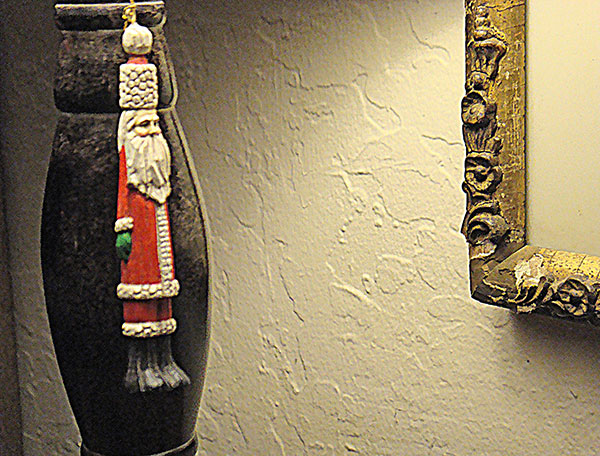Feb 16, 2010.
I got the first thousand words or so written on my chapter “The Goddess” today, the second-to-last chapter of my novel, Jim and the Flims.
The last couple of weeks, I’ve been working on a painting of the scene in this chapter, showing Jim and Val in the sea at Flimsy’s core. I thought I finished the painting yesterday morning, but today in the afternoon, I revised it a little bit more after writing.
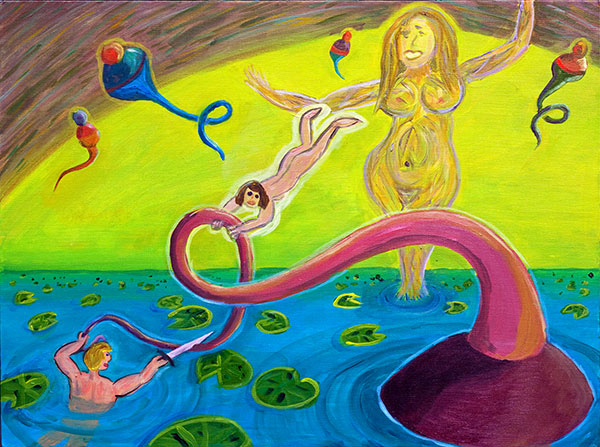
“At the Core of the World”. Acrylic, 24” x 18”. February, 2010. Click here for larger image.
I wasn’t sure what to call the painting. I considered calling it Unknown Legend, because it’s so clearly an illustration depicting some specific chain of events—but nobody (not even me, at least not fully) knows what the events are.
That must be Val who’s helping Jim cut off a piece of that big jiva’s tendril. I figure Jim has his young friend Durkle’s sword.
(I might mention here that (a) I derive my images of the jivas from the cartoonist and artist Jim Woodring’s work and that (b) it’s really only a coincidence that the main character in my novel is called Jim—the book was well underway before I met Woodring or started using jivas.)
Initially I’d imagined that my Jim would be fighting his way past the jiva, but maybe we’ve seen enough jiva-fighting by now. This picture suggests that the jiva is dead or maybe just acquiescent—given that she’s somewhat passively allowing Jim and Val handle her tail.
That’s the goddess of Flimsy in the background. Maybe the goddess killed the jiva and told Jim and Val to cut off a piece of it for her to eat? Or maybe they’re supposed to get something special from inside the jiva? A huge gem for the goddess.
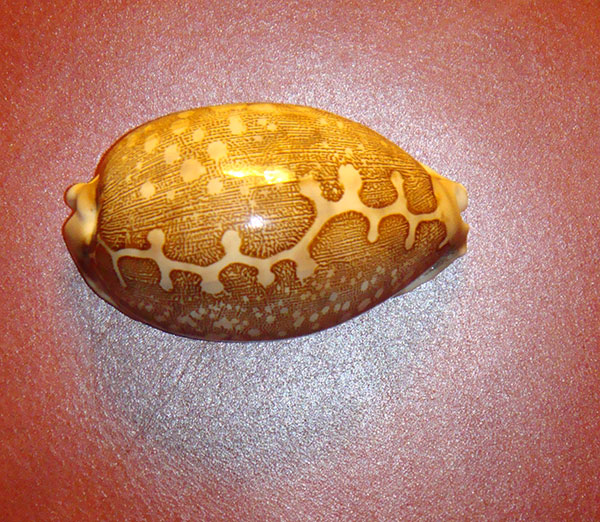
I like the concept of a huge gem, that has a good fairy-tale quality, finding a treasure inside the body of the slain monster. But maybe I don’t want to bring the gem thing in. I don’t absolutely have to make my story match the picture that I happened to paint. But I do, at least in principle, like the notion of letting my subconscious painterly process provide some input into the plot.
I don’t want to overly slow things up. At this point the author, the narrator and the readers are on the luge of dramatic exigency, racketing down the slope, longing for the climax.
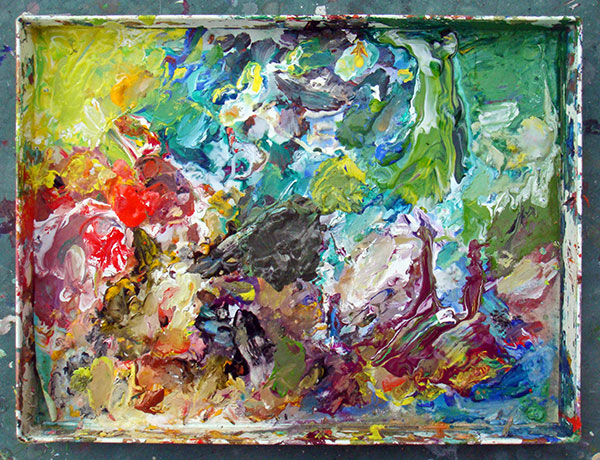
Feb 17, 2010.
I’m still wondering what Jim’s going to do with that piece of jiva tail he’s slicing off.
Here’s a different slant on that gem-in-jiva idea that I wrote about yesterday.
Souls are more valuable then gems. In Jim and the Flims, souls take the forms of sparkling little “sprinkles.” So it’s better if Jim is getting sprinkles from the jiva, and planning to give them to the goddess.
When I was talking to the cartoonist and artist Jim Woodring at the Clarion West party in Seattle this summer, I casually said something like, “It’s no big deal to have a soul, anything can have a soul, it’s just existence, or maybe a little bit of computational capacity.” I was on my hylozoic kick. And Woodring draws himself up, acting flabbergasted. “A soul—a soul is by no means easily made.”
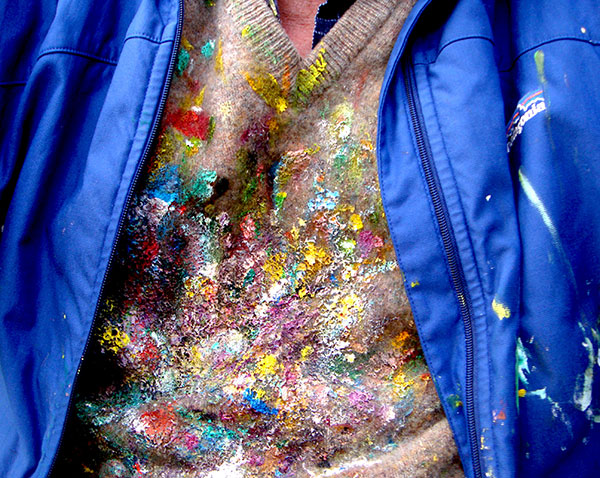
Suppose that I go with Woodring’s view of things. So the sprinkles/souls are rare and precious. And the goddess of Flimsy is more or less continually sending sprinkles down to the septillion inhabited worlds of our universe so that new beings can keep being born. So it make sense that she’d be recycling sprinkles.
But we might also suppose that Flimsy is, with some difficulty, producing new sprinkles as well. Perhaps they’re growing in the flowers of the water lilies of the Paradise Sea.
And, now, getting back to my painting, At the Core of the World, what if that jiva Jim is carving on is the Memsahib High Jiva, the fattest of them all, the Empress of all jivas who hooks into all the bobbling bulbs down in the Dark Gulf. And suppose also that this Core Jiva accumulates all the souls that her subordinates catch. And there’s a huge stash of sprinkles tucked into her body, maybe into the tip of her tail, and Jim’s carrying it up to the goddess of Flimsy.

Feb 18, 2010.
I had a good day. I wrote about 1,600 words and now the first draft of the “The Goddess” chapter is done. It helped to have the painting to think about. I’ll revise the chapter once or twice and move into the final chapter soon.
It’s hard to stay at it, but, on the other hand, I don’t want to stop. At this point it’s almost like an athletic thing, like finishing a hike. I’m driving myself, but in a fairly pleasant way.
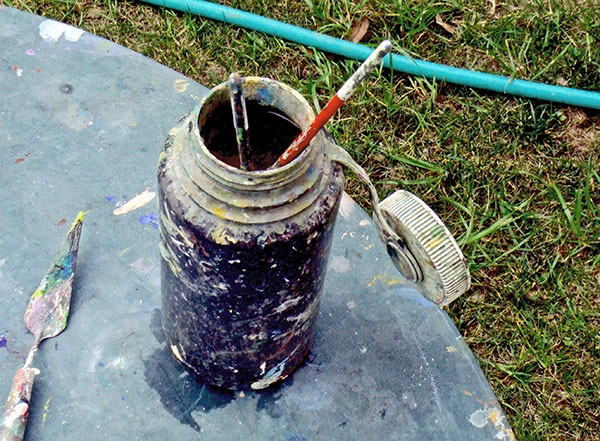
I’m thinking now about my next revision—which I hope to do tomorrow or this weekend or Monday. I have to put in the sprinkles drifting out of the water-lily blossoms.
And I’m thinking it’s better if the jiva tail-tip is like the cap on a plastic squeeze bottle of mustard, and that the whole jiva is full of sprinkles. So instead of the sprinkles (= souls) being in the tip of the tail they’re in the main body fo the jiva. And the goddess sticks that main tendril of the jiva into herself, like she’s filling up a car with gas. Vrooom! She’s loading up with new souls to spew out into the septillion worlds.
I can’t quite decide whether the tendril—and then Jim and Val on their way back to Earth—go through the goddess’s navel or through her vagina. Maybe I just go with the navel, which probably makes the scene easier for the average reader to think about.
